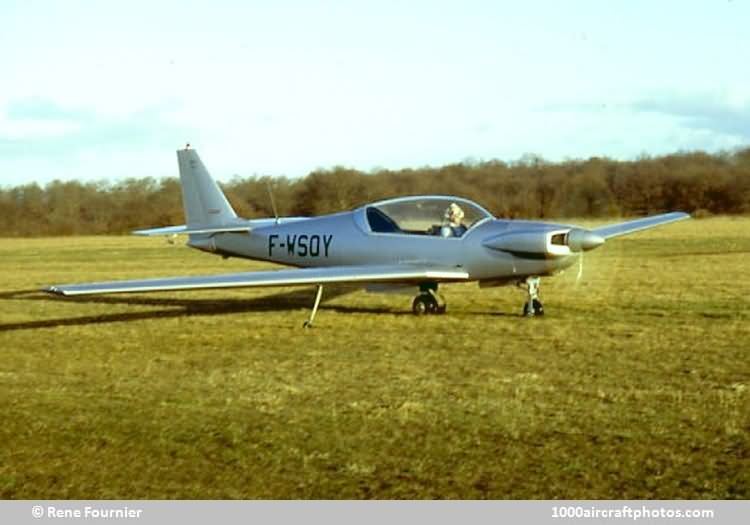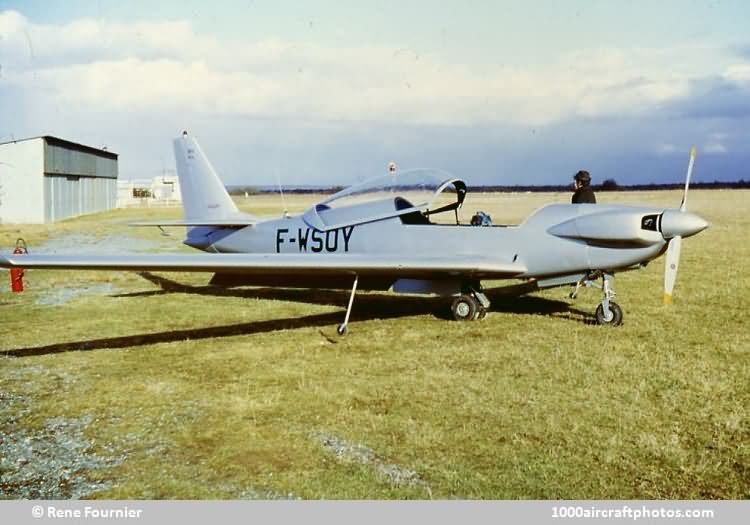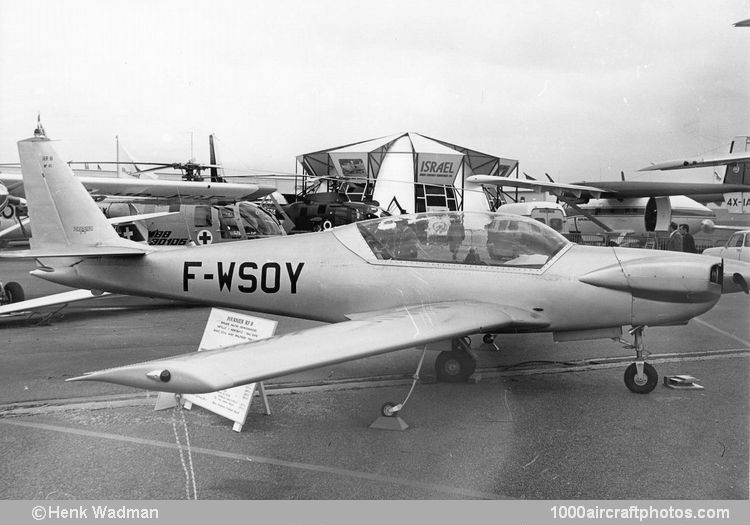07/31/2014. Remarks by
Johan Visschedijk: "The RF-8 was designed by René Fournier for a French AF competition for a training aircraft powered by a 115 hp engine, IFR equipped and certified for aerobatics. The RF-8 was of all-metal fail-safe construction and was, therefore, in a completely different category to that of the wooden aircraft of Fournier design produced in Germany by Sportavia, although similar in outline.
Aeronautical subcontractor Indraéro at Argenton-sur-Creuse built the prototype, which, registered F-WSOY, flew for the first time on January 19, 1973.
(
Henk Wadman Collection)
Sales would be handled at Aérodrome d'Athée-Nitray, Montlouis, while Indraéro had the exclusive rights to manufacture the RF-8. The aircraft was displayed at the Paris Air Show in May 1973, as well as in May 1975, where reportedly it was referred to as the 'U-2 of the poor'. However, for unknown reasons the aircraft was not selected, and subsequently it was stored dismantled at the Indraéro plant.
Almost forty years later, Réne Fournier had the prototype returned to him in 2013 and he donated the sole RF-8 to the Musée Régional de l'Air at Angers Loire Aéroport, where it presently is under restoration for static display."
Type: Two-seat training and aerobatic light aircraft.
Wings: Cantilever low-wing monoplane, quickly removable from short center section. Wing section
NACA 633618. Constant dihedral from roots. All-metal fail-safe structure, consisting of a main box-spar, auxiliary rear spar, pressed ribs and sheet metal skin 0.8-1.0 mm thick, assembled with countersunk rivets to give a smooth surface finish. Statically and aerodynamically balanced ailerons and electrically-actuated unslotted flaps occupy full-span of trailing edges. Mechanically-actuated (electrically-actuated on production aircraft) retractable plate-type airbrake above and below each wing at approximately mid-span and mid-chord. All control surfaces actuated by rods which are connected automatically when the wings are fitted. No tabs.
Fuselage: All-metal semi-monocoque fail-safe structure in two sections. Central section embodies the wing center section structure, landing gear, engine mounting and cockpits. Rear fuselage carries the tail unit.
Tail unit: Cantilever all-metal structure, with sweptback fin and rudder. All surfaces are easily removable. Rudder is cable-actuated; elevators are operated by rods. Trim tab in port elevator.
Landing gear: Electrically-retractable tandem type, with retractable balancer wheels at mid-span. Messier-Hispano hydraulic shock-absorber on each unit. Twin-wheel main unit, wheel size 360 X 130, with hydraulic brake. Single steerable nose wheel, size 300 x 100.
Power plant: One 115 hp (125 hp on production aircraft) Lycoming four-cylinder horizontally-opposed air-cooled engine, driving a Hoffmann two-blade constant-speed propeller. Two fuel tanks, in leading edge of each center section, total capacity 145 lb (66 kg).
Accommodation: Two seats in tandem, under large one-piece canopy which slides on three rails, after first lifting to clear the occupants. Dua1 controls. All essential flight and navigation instruments are standard on both panels.
Equipment: Provision for IFR equipment and oxygen system in production aircraft.



